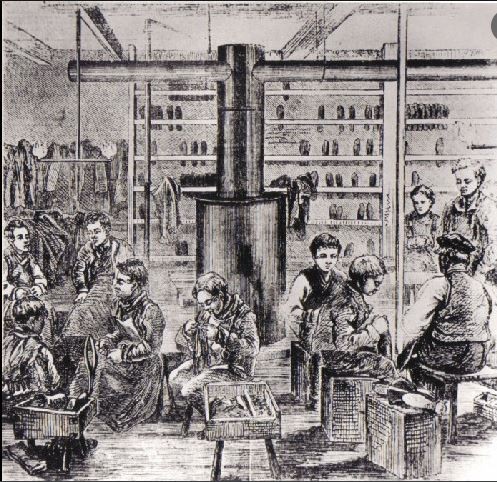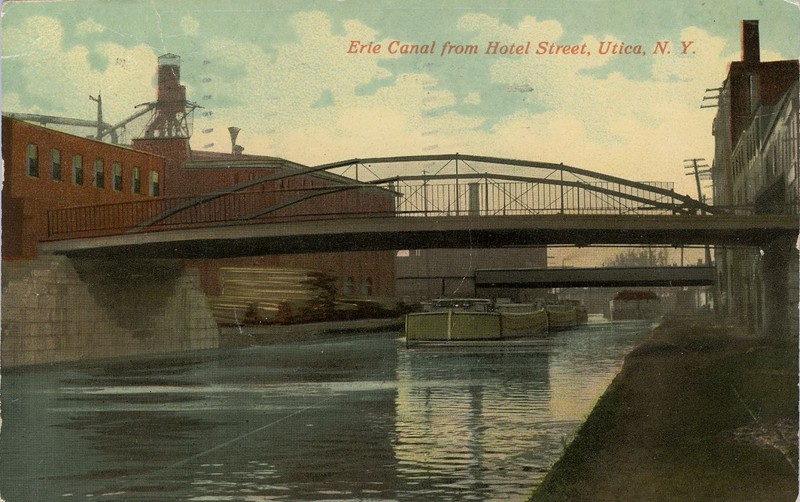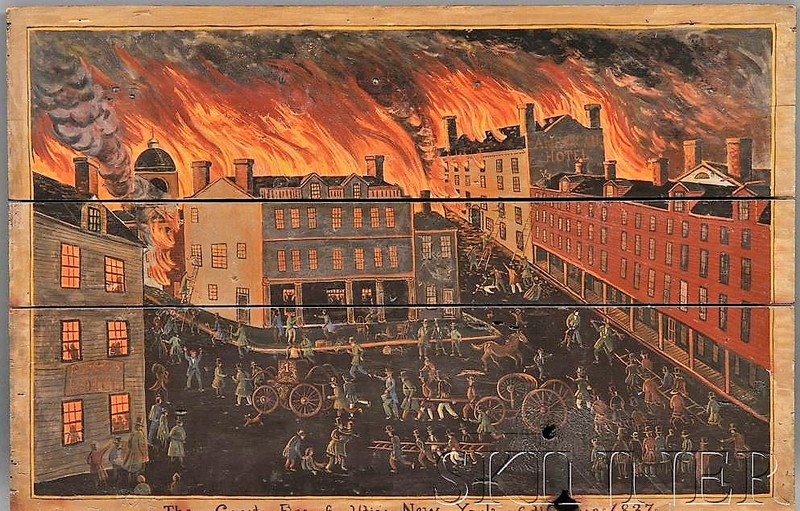The First Shoe Factory, the Erie Canal, and the Great Fire of 1837.
Introduction
Text-to-speech Audio
As the city of Utica grew, so did its shoemaking industry. The first large-scale production of shoes began in eighteen thirty-seven by John Cantwell. He had a shop at 3 Catharine Street, where he employed over a dozen employees making what some referred to as “the finest shoes and boots in Central New York."
There were twenty-eight shoemakers listed in the 1838 City Directory; by 1840, there were close to one hundred. Most of the shoe maker shops were centered around the foot of Genesee Street and the surrounding blocks. These were located close to the Erie Canal, which opened in 1825.
The first "Great Fire of Utica" happened in eighteen-thirty seven. Almost as a natural type of Urban Renewal several fire burned this lower part of Genesee Street and forced the city to rebuild. The fire of eighteen thirty seven burned the western side of the one hundred block of Genesee Street which was considered an older and run down area needed of improvement.
As we move on to the next stop the prosperity of the Erie Canal and New York's railroad system were in full swing. Utica's population expanded as did the shoe industry..
Images
Small shoe factory

The Erie Canal from Hotel Street

The Great Fire of 1837

Backstory and Context
Text-to-speech Audio
The opening of the Erie Canal was a tremendous boom for Utica. The canal gave people easy access to transportation of raw materials and finished goods. Many industries flourished, including leather and shoemaking. The Erie Canal ran straight through downtown Utica following what today is known as Oriskany Street or 5 S. Commercial and Industrial businesses were nestled shoulder to shoulder along the canal in Utica's central business district.
The Great Fire of Eighteen Thirty-Seven:
The great fire of Utica broke out about 2 o'clock in the morning on March 31, eighteen thirty-seven, on the second floor of a frame building on the corner of Genesee and Broad streets. The building housed a grocery store, a silversmith, and a jeweler. According to the Utica Observer of April 4, eighteen thirty-seven: "...the wind was high from the east and most of the buildings, being of wood (a few have brick fronts), the flames spread with great rapidity, and before the engines could be brought into play, had obtained a mastery that was almost impossible to overcome..." The fire consumed a total of thirty-four buildings, most of them merchants and a handful of private dwellings. The article goes on to say, "Undaunted by the disastrous fire, Uticans immediately began the reconstruction of the block..."
This was not the last Great Fire of Utica. As we will see later in the tour, fires took their toll on the Utica shoe industry as well.
Cite This Entry
Reynolds, Patrick. "The First Shoe Factory, the Erie Canal, and the Great Fire of 1837.." Clio: Your Guide to History. June 10, 2022. Accessed August 16, 2025. https://theclio.com/entry/149784/tour/4/reverse

